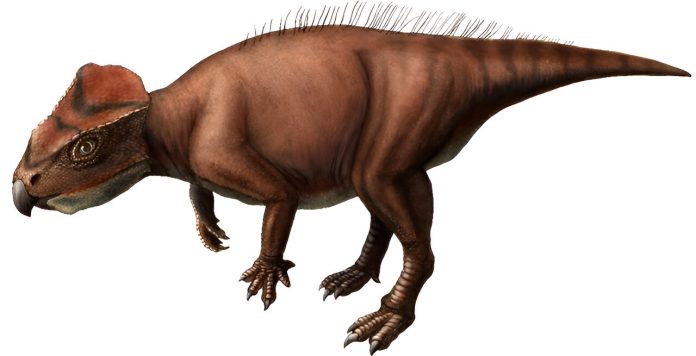
An international team of scientists, including Michael Ryan from Carleton University, has uncovered a new species of horned dinosaur in Japan’s Tambasasayama City.
This well-preserved fossil has been named Sasayamagnomus saegusai, and the discovery was recently published in the journal Papers in Palaeontology.
This dinosaur is a primitive member of the ceratopsian family, a group of herbivorous dinosaurs known for their horns and frills, like the famous Triceratops.
However, unlike its larger relatives, Sasayamagnomus was much smaller and didn’t have the same large horns or frills.
Measuring only about 80 cm (just over 2.5 feet) long and weighing around 10 kg (22 pounds), it was a much tinier dinosaur compared to the massive Triceratops.
The fossil is remarkable because it includes 17 bones, most of which belong to a single young individual.
By studying the tibia, or shinbone, scientists could tell that this dinosaur was still growing when it died. This finding provides valuable insight into the early stages of ceratopsian development.
The name Sasayamagnomus saegusai has special meaning. The genus name refers to a mythical spirit believed to guard hidden treasures underground in Sasayama, the city where the fossil was found.
The species name honors Haruo Saegusa, a scientist who contributed to the field.
Interestingly, Sasayamagnomus is closely related to primitive ceratopsians from North America.
This connection suggests that ceratopsians, which originated in Asia, may have migrated to North America around 110 million years ago during the mid-Cretaceous period.
At that time, the two continents were linked by the Bering Land Bridge, which allowed animals to move between them. Global warming also created large forests in the Arctic, making it easier for these dinosaurs to spread to new regions.
This discovery not only sheds light on the early evolution of horned dinosaurs but also helps scientists better understand how these animals traveled between continents during a time of major environmental changes.
The finding of Sasayamagnomus in Japan offers a new piece of the puzzle in the story of dinosaur migration and evolution.



